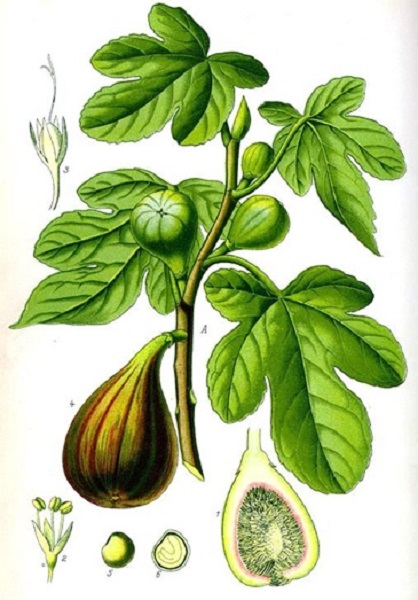Story of the fig begins with Adam and Eve and it was considered to be a divine fruit, the fruit of paradise, in all religions. It was the symbol of abundance. The idiom “sitting under his own fig tree” is said to be used widely in ancient tribes as a sign of wealth. It is the first fruit mentioned in the Bible and according and some clergy the forbidden fruit is the fig and not to apple.

The existence of the fig, together with the grapevine olives in nature in the holy lands and the abundance it provides make it the divine fruit in all religions. In the bible, land with no figs and vine is referred to as not valuable, and it is mentioned that the disciples of Moses had introduced abundance with the fig, together with other fig. It is also stated that the fruit of the first crop, June is very good and the other buds develop the form the real crop.
In addition to its use cakes and similar Food products, the fig is also reported as being used as mush in treating infected wounds. In many sources there is the story about Jesus Christ coming across a fig tree while working near Jerusalem. Not being able to find a ripened fig despite the abundance of leaves, the prophet is believed to have said “thou will not bear any more fruit “after which the tree wilted and dried up. In some sources, however this story is interpreted as a metaphor and is argued that the fig tree represents a nation, a tribe.
In Et-Tin , the 95th chapter of the Koran, oaths are taken on four things: I swear on figs, olives, mount sina and this trustworthy town that we have created man in the best form…” Holy Mohammed is reported to have said “ıf one has to say that a fruit has landed from heavens to paradise, it is the fig”.